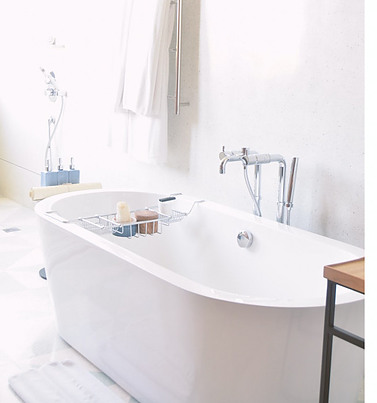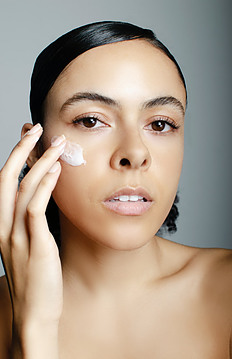Diy Essential Oil Recipes For Skin
I’m here to help you unlock the transformative power of essential oils for skin care. Did you know that these potent plant extracts can be your ally in nurturing and rejuvenating your skin? This isn’t just about smelling good; essential oils can provide tangible benefits that enhance your skin’s appearance and health.
You’ll learn about the advantages of creating your own essential oil blends. Homemade mixes allow you to tailor ingredients to suit your skin’s unique needs, free from harsh chemicals in some commercial products. Plus, crafting something truly personal and natural is the added satisfaction.
Safety is paramount when it comes to skincare, so keep in mind that essential oils are potent. Respect their potency by diluting them correctly and conducting patch tests to avoid adverse reactions. Now, this might sound a bit daunting, but don’t worry too much about it. I’ll guide you through all you need to know to use these oils safely and effectively.
In my opinion, the journey to healthier skin through essential oils pays off immensely. By the time you move to the next section, you’ll be ready to learn the ins and outs of crafting your daily skincare routine with essential oils that could change how you think about self-care.
Here’s a little transparency: Our website contains affiliate links. This means if you click and make a purchase, we may receive a small commission. Don’t worry, there’s no extra cost to you. It’s a simple way you can support our mission to bring you quality content.”

Crafting Your Own Essential Oil Recipes for Daily Skincare
So you’re interested in blending your own essential oils for skincare. That’s a smart move, as creating your mixtures allows customization to suit your skin’s unique needs. Whether you’re starting or a seasoned blender, there’s always something new to learn about creating these natural concoctions.
Essential oils can be your secret weapon for your daily skincare routine. In the morning, you might want something refreshing to help wake up your skin, while at night, a calming blend could support skin repair and relaxation. I will walk you through some basic recipes you can tailor to both ends of your day.
Now, before you start pouring and mixing, let’s talk about a crucial part of using essential oils safely: carrier oils. These oils serve as a base to dilute the essential oils, making them safe to apply to your skin. Jojoba, almond, and coconut oils are great options. And the dilution ratio? A general rule of thumb is to keep essential oil concentration around 1-2% of your total blend.
Oily skin types might benefit from oils like lemon, geranium, or bergamot, whereas those with dry skin could look to sandalwood or lavender. If you have sensitive skin, chamomile or rose might be more your speed. Each oil offers its strengths, and when combined thoughtfully, they form a powerhouse of skincare benefits.
I’ll leave you with a couple of my go-to recipes. In the morning, try a blend of two drops of grapefruit oil and one drop of frankincense in 30ml of jojoba oil. Mix one drop each of lavender and ylang-ylang with 30ml of sweet almond oil for the evening. Remember to adjust based on how your skin feels and reacts.
With these blends, you’re all set for day-to-day use. But what about those times when your skin needs a little more TLC? In the next section, we’ll delve into how to use essential oils to create remedies for specific skin conditions like acne, eczema, and more. This isn’t just about pampering— it’s about taking control of your skin’s health.
Utilizing Essential Oil Recipes for Specific Skin Conditions
That will include exploring essential oils’ unique qualities, particularly ones that might be beneficial for managing skin issues like acne, eczema, and psoriasis. Treating these conditions is about soothing the skin’s surface and targeting inflammation and bacterial growth.
Anti-inflammatory and antimicrobial essential oils are the stars here. For example, tea tree oil has been widely recognized for its ability to fight bacteria, making it a go-to for acne-prone skin. Meanwhile, the calming properties of lavender and chamomile can be a godsend for the itchy and irritated skin caused by eczema or psoriasis.
Now, how should you apply these powerful substances? You’ll learn about proper dilution and carrier oils—like coconut or jojoba—which can safely carry the essential oils into your skin without irritating it. Always remember, a little goes a long way with these potent extracts.
If you want to personalize your approach to these skin conditions, I’m here to help you with DIY recipes tailored to soothe and replenish your skin. But don’t worry too much about perfecting it on your first try. Your approach can constantly adapt as you learn what works best for your body.
Just don’t focus too much on blind trial and error. Patch testing a new blend on a small skin area is essential to ensure no adverse reactions before full application. And if you’re dealing with persistent or severe skin issues, I urge you to seek advice from a dermatologist. Essential oils can be excellent, but they’re not a substitute for professional medical treatment.
Sustainable and Mindful Practices in Your DIY Essential Oil Journey

When you blend essential oils for your skin, you’re not just taking care of yourself but tapping into an opportunity to engage with the environment mindfully. It’s essential to consider where your ingredients come from and their impact. Responsible sourcing is the secret to better results. Choose essential oils from companies that prioritize sustainability and ethical farming practices.
Your homemade blends are a step towards a greener lifestyle, but remember, it’s not just about the concoction—it’s also about how you store and manage your recipes. Opt for reusable glass bottles or containers to cut down on waste. Label them clearly and keep them in a cool, dark place to ensure they stay potent and effective for as long as possible.
As much as I’m here to help you craft effective skincare remedies, I also advocate for ongoing learning. Dive into research about essential oils, stay current on the best practices for skin health, and maintain a healthy skepticism. Not all ‘miracle cures’ you read about will live up to their name, so trust reputable sources and confirm findings when you can.
I hope that you enjoy this journey into DIY skincare. It’s a personal and proactive way to look after your well-being while honoring the planet. If you’ve appreciated these insights and are eager for more, then you’re on the right path. Remember, choosing something that resonates with you is fundamental. Adjust your approach as you learn, and keep nurturing both your skin and the earth—the benefits are truly reciprocal.







Hello Elridge,
Thank you for sharing such a comprehensive and informative guide to unlocking the transformative power of essential oils for skincare. I appreciate the emphasis on customization, safety, and sustainability throughout the article. Crafting your own essential oil blends for skincare is indeed a personal and rewarding journey.
I particularly like the attention given to carrier oils and their role in dilution, as well as the mention of different essential oils suitable for various skin types. The morning and evening blends you provided are a great starting point for readers looking to incorporate essential oils into their daily skincare routine.
The section on addressing specific skin conditions with essential oil remedies is valuable. The emphasis on anti-inflammatory and antimicrobial properties, along with proper dilution and carrier oil usage, is crucial information for those dealing with skin issues like acne. Which is something that I have dealt with all my life. I will have to try this one out.
Thank you for sharing!
Thanks for a great read!
There is nothing better than having essential oils added into your daily skin care.
I love that you have added in the various skin types and conditions to allow us readers step-by-step instructions on how to create their own personalized skincare products at home.
I wonder what you think the most efficient essential oil is on the skin?
One of the most efficient essential oils for use on the skin is tea tree oil (read my article here to learn more about it). Just be sure to mix it with your moisturizers or creams when you apply it to your skin or mix it with a carrier oil like jojoba oil. It’s fantastic antimicrobial and antibacterial properties make it a wonder oil that is gentle and can be used daily. Everyone is different so try small portions of it when you use it to be sure you don’t react to it.
Hello, I love your article , because it talks about making your own skin care products using essential oils. I do this all the time for few years now .You explain why it’s good to use natural ingredients and how to do it safely. I love that you give easy recipes for different skin types and conditions like acne or dry skin. You also remind us to be kind to the environment by using eco-friendly practices. You made a helpful guide for anyone interested in DIY skin care with essential oils. Well done.